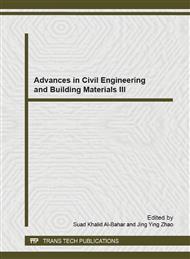p.218
p.223
p.228
p.232
p.236
p.241
p.245
p.253
p.258
A Study on CO2 Emission Reduction Planning in the Water Sector in Office Buildings
Abstract:
Energy, CO2 and Water are most important issues that environmental impact in buildings and cities. These are related each other very closely. This study has attempted to analyze CO2 emission by water usages, sewage wastes and also water saving strategies like installation water saving devices, rainwater harvesting and gray water system in office buildings. To assess from the early design stage, should be developed regional water amount and regional CO2 emission factor by water. Consequently, estimated one sample office project in Korea and suggested effective CO2 emission reduction plan in the water sector. Total amount of CO2 emission in the water sector in sample office building is 188.25 t·CO2eq/yr.
Info:
Periodical:
Pages:
236-240
Citation:
Online since:
December 2013
Authors:
Keywords:
Price:
Сopyright:
© 2014 Trans Tech Publications Ltd. All Rights Reserved
Share:
Citation:


